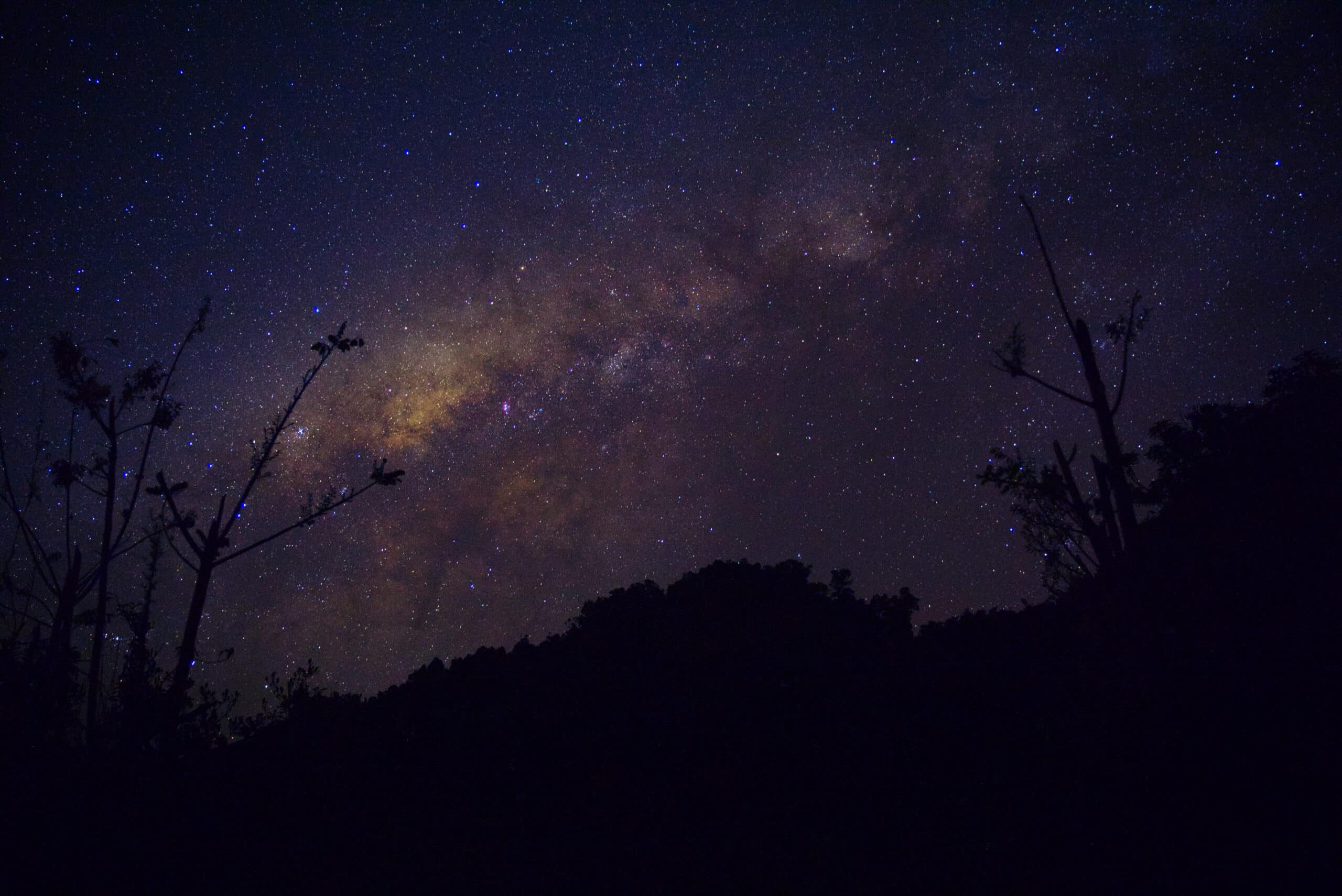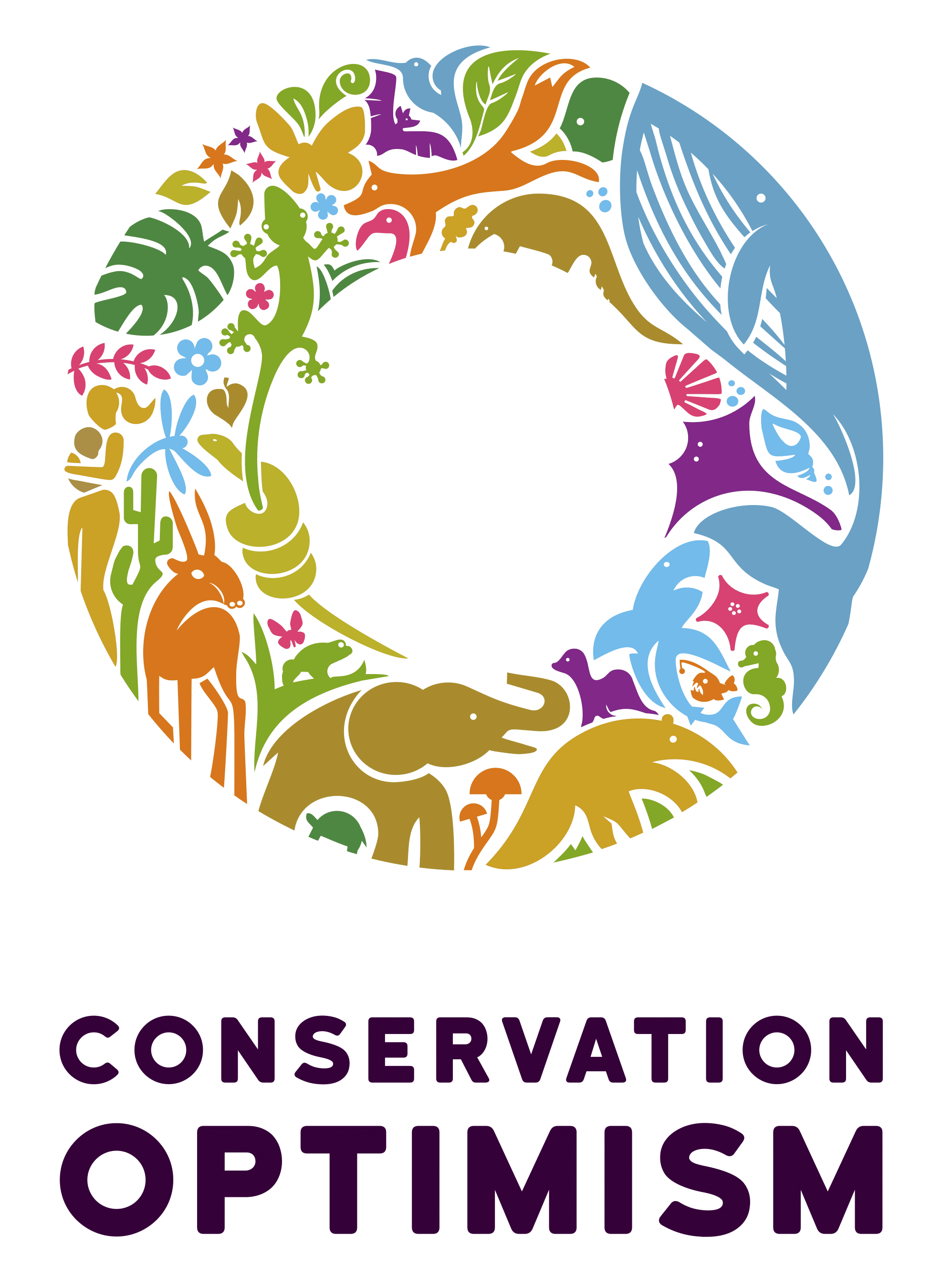In a new assessment published earlier this year, the Livingstone’s Fruit Bat has officially been downlisted from Critically Endangered to Endangered in the IUCN Red List. This piece of good news comes after years of tireless conservation work by Dahari, an NGO based in the Comoros, in collaboration with Bat Conservation International (BCI).
For this blog, I had the pleasure of interviewing BCI’s Regional Director for Africa and South Asia, Dr. Isabella Mandl, to discuss the bats’ downlisting and her experiences working with them in the Comoros.

Livingstone’s fruit bat collar tracking
(Credit: Dr. Isabella Mandl)
Getting to know the Livingstone’s
The Livingstone’s Fruit Bat is a species of flying fox. They are “big, fluffy, and dopey-looking,” as Isabella describes them, with very dark fur, orange eyes, and rounded teddy bear-like ears that endear them to zoo visitors and scientists alike.
They’re found only on two islands in the world. These islands, called Anjouan and Mohéli, are part of the Union of the Comoros, a small country and former French colony off the African Coast in the Western Indian Ocean. It’s a small home, to be sure. And it has been getting smaller.
“The Comoros had some of the highest deforestation rates in the world over the past 40 years.” says Isabella. She adds that only 10% of Anjouan has any rainforest left. “The rest of the island is green, but those aren’t native trees.” As deforestation accelerated due to lingering pressures of colonialism, the Livingstones and other native species found their home trees replaced by spice plants like cloves and cinnamon that fetch high prices on the global market.
With so much of their habitat destroyed, since 2019, Dahari has conducted research using GPS trackers to better understand how the Livingstones use the landscape and remaining forest. The tracking technology would show where they likely feed and roost, and help conservationists plan their actions more strategically.
Isabella, who was working with Dahari at the time, trekked into the Comorian forests with her team to gather this crucial data, but the Livingstones didn’t make it easy.
Keeping up with the Livingstones
“They kept doing things I didn’t understand. I never ended up predicting what they were going to do,” Isabella tells me. Instead of leaving their roosts at night at regular times, like most other bat species, the Livingstones would head out of their homes at around three or four in the afternoon.
“If you put up a capture net during that time, they would see the net and not fly in. We had to learn how to position ourselves, when to actually open the nets, when to expect the bats to fly in.” On top of this, the researchers realized the bats’ movements depended highly on weather conditions.
For example, if it rained, they would take alternate routes to fly around and down mountains, which meant they would not fly into the nets the team had set up.

Livingstone’s fruit bat with tracker
(Credit: Dr. Isabella Mandl)
Few had actually captured the Livingstone’s fruit bat before Dahari’s research team, which meant they had to constantly adapt and learn from the bats’ behavior out in the field.
“I remember being sat in pouring rain for three days straight with a team that’s getting disheartened about not capturing anything. The first time we went out to GPS tag a big group of bats, we were trying to catch bats for around four or five weeks and only caught ten of them.”
Though they faced the constant stress of slow progress and few captured bats, Isabella happily concludes that it all worked out in the end, “because you learn, and you adapt.”
“And even on nights when you don’t catch any bats, you’re still out there in the forest where most people don’t usually go, often with perfect weather. You were under the starry sky, you heard the bats in the distance, and suddenly there’s fireflies all around you,” she recounts. “There’s just some things that keep you going, and for me, those moments were very special.”

Dr. Isabella Mandl and the team from Dahari with a Livingstone’s fruit bat.
(Credit: BCI, Ben Anthoy)

The night sky on Anjouan
(Credit: Dr. Isabella Mandl)
Engaging the community
As it turned out, all the data gathered by the research teams brought all previous studies done on them into clearer focus. It also led to the discovery of new roosting sites and potential feeding spots, which provided strong support for the downlisting of the bats in the IUCN Red List this year.
But there’s more to the story. The downlisting could also have been influenced by Dahari’s engagement with the local population in restoring the islands’ forests. While the Comorian people were well aware of the bats’ importance in the ecosystem, thanks to a previous outreach campaign, they nevertheless had to support their own families through farming and had few options but to cut down the rainforest on their lands.
“This is where Dahari goes in and acknowledges the need for food and safety, working with the local people to find solutions where the ecosystem can thrive alongside them,” Isabella explains.
On Anjouan, the organization provides support to farmers in the form of cash, crop seedlings, and training in sustainable agriculture. In return, farmers would agree not to cut down trees and help regenerate forest on their land in areas crucial to the local biodiversity, such as watersheds and existing rainforest. This means more water provision for the island’s rivers and more habitat for the Livingstones, as well as the unique butterflies, birds, and reptiles that call the island home.
Isabella further explains, “The idea is to make sure that certain areas that are important to the biodiversity and the ecosystem in general are being protected, regenerated, and that the people who own that land are informed and cooperative in the process.”

Livingstones fruit bat at roost tree on Anjouan (Credit: Dr. Isabella Mandl)
Looking to the future
Near the end of our conversation, I asked Isabella to share her thoughts on the downlisting, and whether or not she feels optimistic for the Livingstones’ future. “It’s so hard to answer this as someone who works in conservation,” she admits, “because you see the reality of it.”
Dahari’s efforts in monitoring the bat population and decreasing the deforestation on their home islands have clearly yielded results, as the population seems to have stabilized despite significant habitat loss.
“While I’m very happy that we got to downlist the bats, the work is still far from done. Their population is still very small, with only around 1,500 bats,” she says.
“A population that small needs to be continuously protected. We need to be very aware of how differences in their natural habitat might affect them, and the monitoring is one of the important things that need to continue, because it helps us to adapt our conservation actions in an effective way.
“But also, I think the downlisting is important to show that if you really work on something, you get better ideas and better data,” she adds. “You get a better understanding of the reality, and you can better plan what you need to do. With the Livingstones, we know that we need to keep an eye on them, and we know what needs to be done to protect them.”

